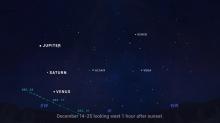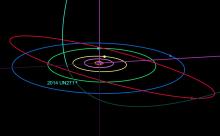Listen to today's episode of StarDate on the web the same day it airs in high-quality streaming audio without any extra ads or announcements. Choose a $8 one-month pass, or listen every day for a year for just $30.
You are here
Draconid Meteors
An unpredictable meteor shower should be at its best tonight. It could even produce a rare outburst, with hundreds or more “shooting stars.”
A meteor forms when bits of dust and rock burn up in the atmosphere. Most of these particles are tiny, but they hit the air so fast that they vaporize, producing streaks of light.
Tonight’s meteor shower is known as the Draconids, because the paths of the meteors trace back to the constellation Draco. But you don’t need to know where the dragon is to watch the shower. If it appears, you’ll see meteors in all directions.
Most years, the Draconids don’t do much — only a few meteors punctuate the sky. Twice during the 20th century, though, though, the shower turned into a meteor storm — in 1933 and 1946.
This year could produce a good show, too. The comet that sheds the particles that spawn the shower passed by us just a month ago. So Earth could hit a stream of meteor-making particles.
Unlike most meteor showers, the Draconids are best observed before midnight. So you can head out to look for the meteors as soon as the sky gets dark. Your chances of seeing them are best if you get away from bright city lights. And the biggest nightlight of them all, the Moon, won’t interfere, because it’s new tonight.
The Moon is predictable, but the Draconids are not. So no one knows what will happen after dusk tonight — whether we’ll see lots of Draconid meteors or none at all.
Script by Ken Croswell





